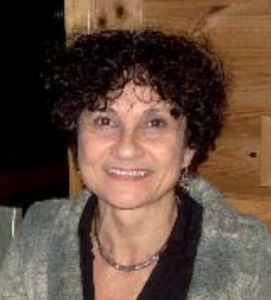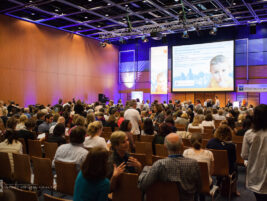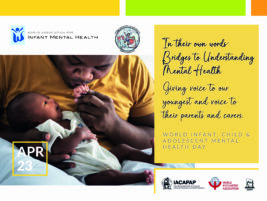In the literature review on the filicidal parent’s motives to kill their infant, as it has been described in this Issue, “accidental death due to abuse” is mentioned. Baby Shaken Syndrome is one of the causes for such accidental death.
By chance, in parallel to the preparation of this Issue, two cases of Baby Shaken Syndrome, one of them lethal, were reported in the news, and created very strong reactions in the Israeli media. It reminded me of a similar case we had at our Infant Mental Health Conference last year. A 26-year-old father could not stand his baby’s inconsolable cry in the midst of the night and shook her so badly the baby was left with mild to moderate brain damage. He was discharged from the police under the condition that he participate with his wife in our unit for intensive treatment. There were no indicators of chronic abuse towards the baby.

As opposed to the public “black and white” reaction, we had no choice but to try to overcome the almost automatic identification with the victim…a 4 month- old beautiful baby, the first child of a young, immigrant couple… and to develop a more complex view of the case. Not surprisingly, the team member who volunteered to be their therapist was our social worker (Selma Fraiberg was indeed a social worker…)! We enrolled both parents and their baby in an intensive treatment plan we have put in place for neglectful/violent parents. The plan includes two weekly sessions. The first is a parent-infant group interactional therapy and the second is an individual triadic (mother-infant-father) session. Our adult psychiatrist diagnosed the father with impulsive and antisocial traits, but did not see him as a violent man.
Within the parent-infant group sessions, as a sense of basic trust slowly emerged among the parents, the father felt confident enough to tell what happened. As opposed to the usual horrified reactions heard in the general public, the other parents identified with the father’s extreme reaction to the baby’s persistent cry. Each of them started to tell the group how much they fear their baby’s cry. Almost by definition of the reason for their enrollment in this high risk parents’ group, all of the parents have complex childhood attachment histories. The persistent cry, a central attachment signal, evokes in all of them helplessness, followed by anger and rage, as they perceive the baby ias persecutory. Shaking the baby in despair and rage becomes the end-point of this psychological chain of events.
The therapist’s ability to sort out parental despair and fear as separate from the violent act, is, I think, the first step in our duty, often imposed on us by the court, to try and treat violent parents. We do not have the luxury to simply put them far away from us, by labeling them “simply crazy” or “horrific” as the media has. It seems to me that we as infant parent therapists are trained to treat these parents as victims of trauma and domestic violence rather than perpetuators of abuse. As the baby’s cry may become the trigger for a filicidal act, the parent’s treatment can start only with the establishment of a secure base that will give him/her tools for regulating his/her strong negative affects engendered by fear, loneliness, and helplessness in face of their crying infant, exactly what they missed in their own past. At the end of a two-year therapeutic process, the father who participated in treatment with us concluded by saying: “Only now I understand how much being a parent is not something to take forgranted”. He and his wife have decided to have their second child.
Vol. 20 No.1 Spring 2012 – Editor’s Perspective – When cry becomes lethal
Authors
Keren, Miri,
M.D.,
Editor of Signal,
Israel








